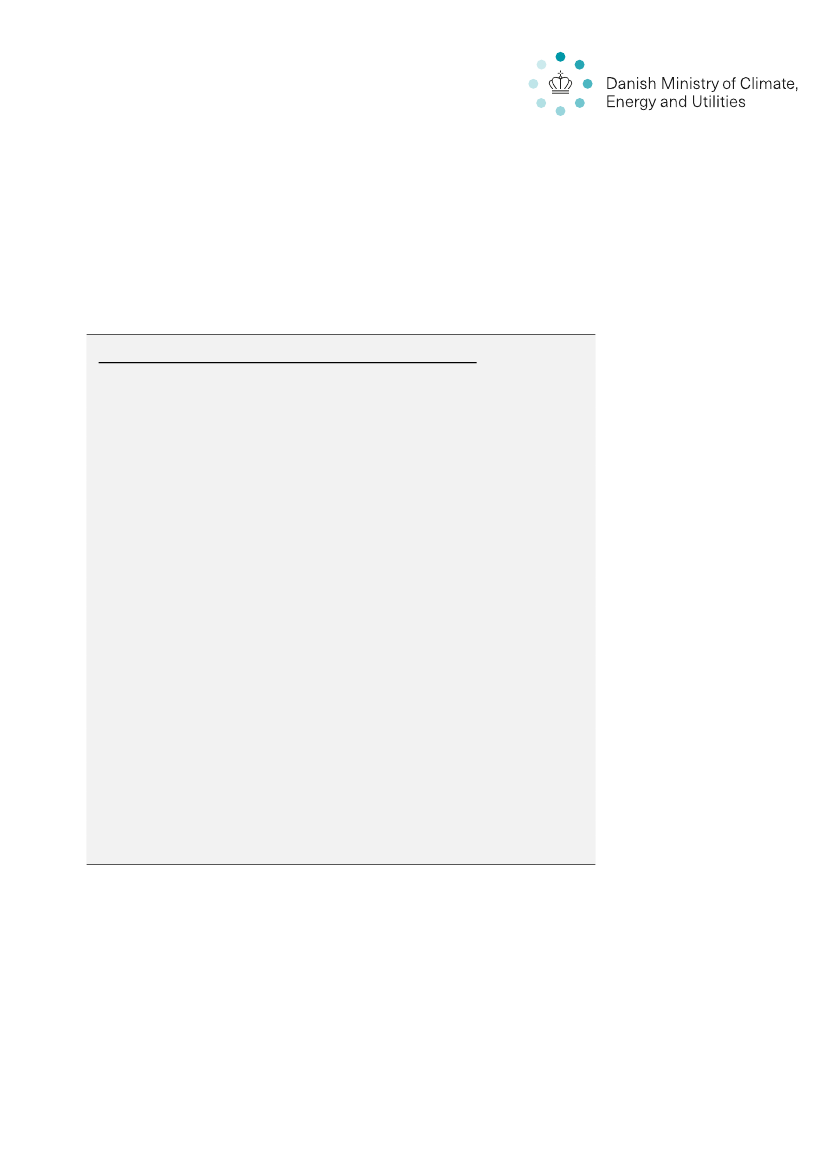
Danish Government’s position on a revised EU Energy Efficiency Directive
Date
8 April 2021
Key Danish priorities for the revision of the Energy Efficiency Directive:
Overall support for the
Commission’s approach
regarding energy efficiency that must
contribute cost-efficiently to achieve the EU emissions reduction target of at least 55
percent by 2030 and the objective of achieving climate neutrality by 2050.
Encourages the Commission to raise the present energy efficiency target at EU level to
40 percent of EU’s final energy consumption by 2030
(article 3), while maintaining the
current level and scope of the Energy Efficiency Obligation (article 7).
Encourages the Commission to maintain the possibility to use the alternative reporting
method
related to the public bodies’ energy efficiency obligation
and to focus on de-
veloping a framework that provides a more consistent and equal savings obligation
across member states (article 5).
Encourages the Commission to modernize the policy framework for energy efficiency,
taking into account the national circumstances of the various member states in order
to incentivize least-cost paths for emission reductions.
Encourages the Commission to strengthen existing and introduce new measures at
EU-level to strengthen energy efficiency policies, e.g. sector specific regulation for
data centres, expanding the scope for regulation of energy consuming products
(Ecodesign) as well as extending the EU Emissions Trading System (ETS) to heating
in buildings. Regarding the building sector, focus should be on increased use of data
and digitalization, as well as smarter utilization of building spaces and elimination of
fossil fuels for heating and cooling of individual units.
Encourages the Commission to ensure comprehensive alignment with the
“Fit for 55
package”,
especially regarding the ETS and sectoral legislation in the Energy Perfor-
mance of Buildings Directive and sustainable product policies (Ecodesign and label-
ling). The Commission is also encouraged to come forward with guidance on the prin-
ciple of »energy efficiency first« to encompass costs and the wider benefits of energy
efficiency measures.
General comments
Despite the recent revision of the Energy Efficiency Directive (EED), the Danish
Government finds it timely to consider revising the directive again as part of the Eu-
ropean Commission’s “Fit for 55 package”
in order to achieve at least 55 percent
emission reductions by 2030 and a climate-neutral Europe by 2050 at the latest.
The Commission should ensure full alignment between the revised EED and other
relevant legislation highlighted
in the Commission’s 2021 Work Programme.
Side 1/5